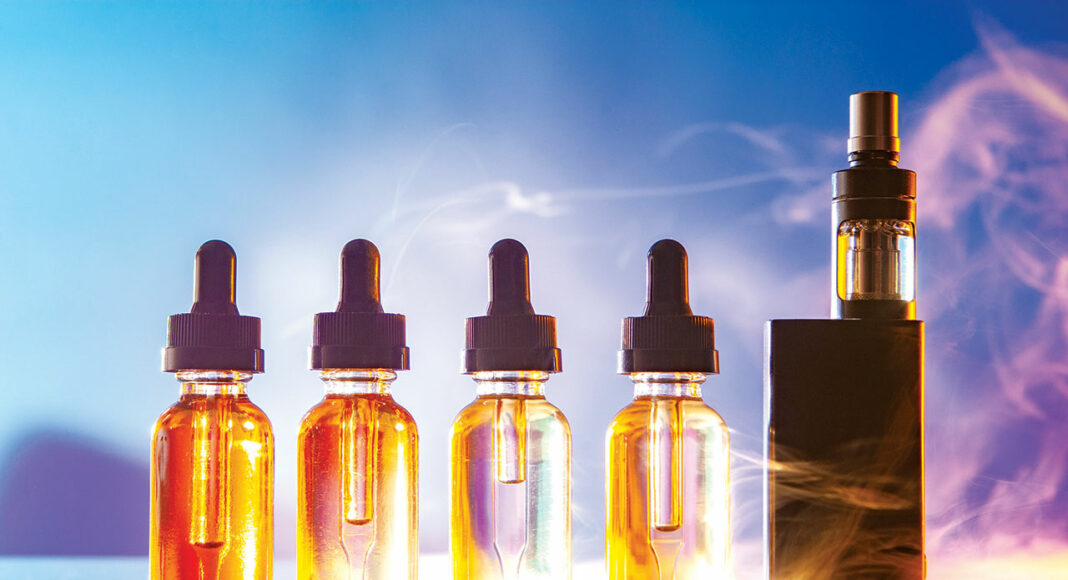After the vaping-illness outbreak that started in 2019, when people were sent to emergency rooms in droves and several dozen of them died, sales of cannabis vaping products ground to a near-halt. Sales have picked up again since, and reports of vaping-related illnesses have slowed way down—but they haven’t stopped.
Meanwhile, many people seem to think we know exactly what happened to cause those health issues, but we really don’t. Not only that, but we still don’t even know for sure how safe the safest vaping products are, including the ones that are tested and approved for sale in cannabis dispensaries.
“The jury’s out,” says Robert Strongin, a chemistry professor at Portland State University, speaking on a recent episode of the Period Effects podcast. Strongin is at the forefront of academic efforts to study both cannabis vapes and tobacco-based e-cigarettes.
For cannabis vapes in particular, he told the podcast’s host Wayne Schwind, “there’s not a lot of inhalation toxicology data so far.”
One major problem is that it’s so difficult for university researchers to study the health effects of cannabis because of the onerous restrictions imposed by the federal government. Even just getting a single sample to study can be a major challenge.
But even if the country’s scientists could get their hands on samples more easily, vaping is still so new that even under the best of circumstances, researchers wouldn’t have by now come up with a lot of definitive data.
“No one ever thought we’d be inhaling vitamins and no one ever thought we’d be inhaling food flavors,” Strongin said, referring to the vitamin E acetate that is suspected to be the culprit in the vape-related outbreak of illnesses that caused about 2,700 hospitalizations and at least 60 deaths.
Vitamin E acetate is used as a thickening agent in the cannabis concentrate and many of the illnesses were tied back to illicit vapes—made by cretins in their garages—that used way too much of the acetate.
Beyond that, even the safest vapes might emit harmful chemicals from the metal components and from the solvents used to make the cannabis concentrate itself. Or, maybe not; we just don’t know yet.
What we do know, experts say, is that many of the most harmful toxins created from the burning of raw cannabis (and tobacco) are not found in the vapor that is inhaled from vape cartridges and disposable pens. But that doesn’t mean the chemicals that are found in vapes are all safe.
So far, the general consensus seems to be that vaping might be better for your lungs than smoking flower is. But the general consensus is also that breathing anything into your lungs other than air carries risks.
The problem is that, aside from smoking flower, there aren’t many options other than vaping for anyone who needs or desires a quick onset of the effects. That’s important for people who use cannabis for medical purposes and it’s a major convenience factor for recreational users.
Edibles are a fine choice in many circumstances, but they present more of a dosing challenge, and the time commitment is often greater because it can take an hour or more for the effects to fully kick in. Another option is sublinguals—of which Oakland-based Kin Slips is a leading producer—that go under the tongue and take effect within minutes. But those are far less ubiquitous than vapes, and can be hard to find.
So, for those willing to take the potential risks associated with vaping, it’s best to adhere to a few simple guidelines: make sure to buy vapes only from licensed cannabis shops, which sell only tested products. Even then, buyers should always read labels carefully and note the ingredients used because there are lots of copycat and otherwise illicit products out there and they sometimes make their way into legal shops. If anything looks problematic or dicey, talk to a trusted budtender before making a purchase.
Finally, take special note of flavorings. As with e-cigarettes, added flavors are proving to be a particularly troublesome aspect of cannabis vapes. This is because we don’t yet know how harmful flavorings might be when burned. They might “break down at high temperatures” into harmful chemicals, Strongin told Periodic Effects.
Humans, he reiterated, “aren’t really designed to inhale food products.”



